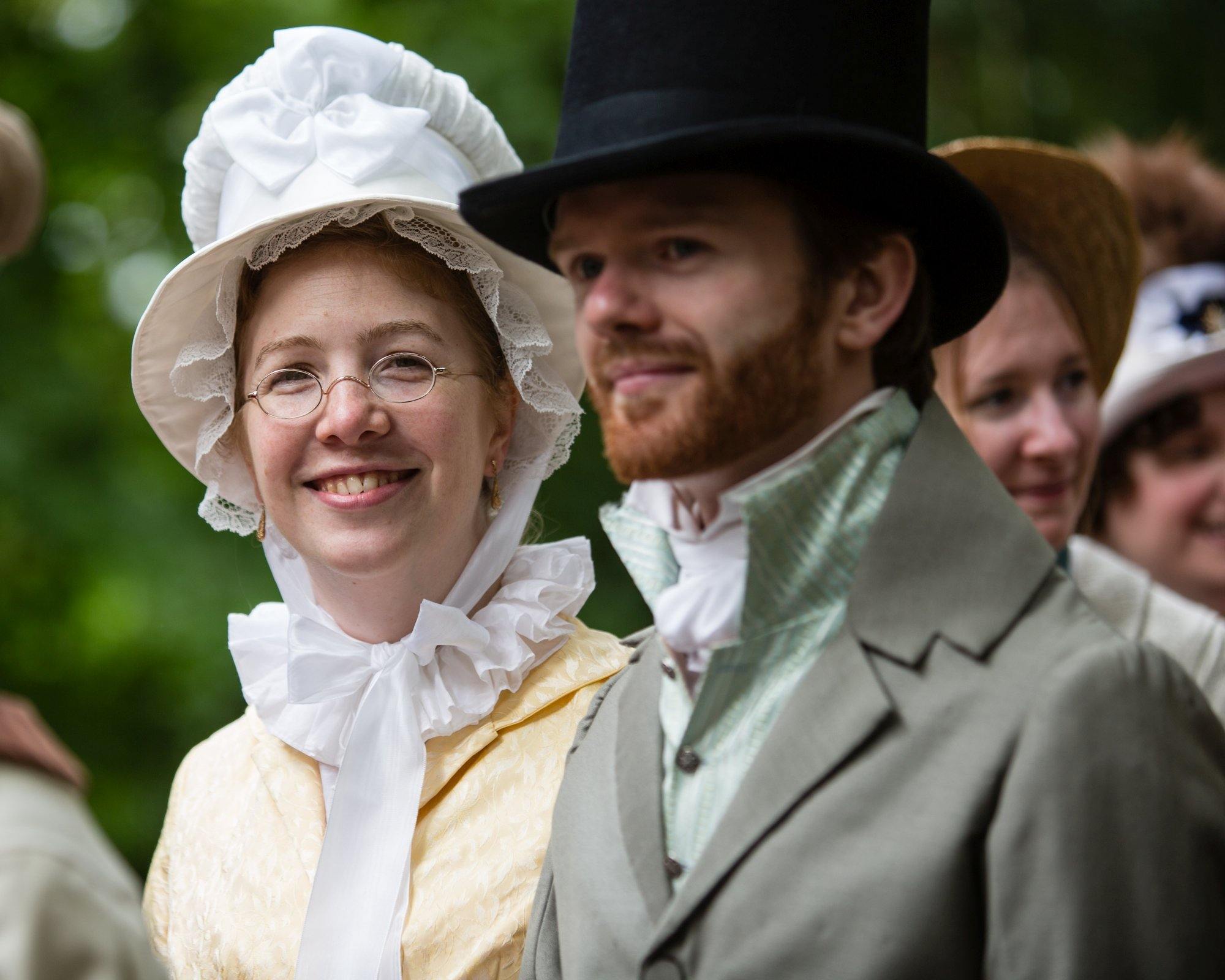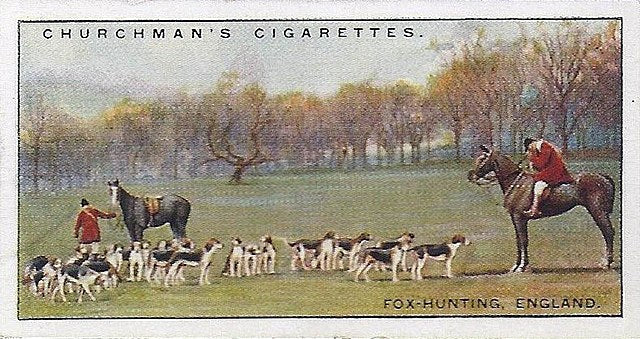Beaver Hats Build a Nation
But the merit of the curricle did not all belong to the horses; Henry drove so well -- so quietly -- without making any disturbance, without parading to her, or swearing at them: so different from the only gentleman-coachman whom it was in her power to compare him with! And then his hat sat so well, and the innumerable capes of his greatcoat looked so becomingly important! To be driven by him, next to being dancing with him, was certainly the greatest happiness in the world. Northanger Abbey Jane Austen
 Beaver fur was the raw material for a high quality felt suitable for hat making. Felted beaver fur can be processed into a high quality hat that holds its shape well even after successive wettings, making it the material of choice for the hats worn by English gentlemen. At first, British hatters imported beaver pelts from Russia and Scandinavia. When these populations dwindled under the overtrading due to the high demand for beaver fur, hatters turned to the American Colonies for their raw materials. Hats made exclusively from the undercoat of a beaver were the most expensive and of the highest quality. Lower quality, half-beavers, hats could be made of beaver fur mixed with wool or hare fur, to produce a hat that was similar in style, less durable, and less expensive in price. Hat production was a staple of the British economy. This industry employed many workers from low skilled carders to highly skilled journeyman and master hatters. Their production supplied not only the fashion industry, but also military contracts. Beaver pelts for hat making were acquired from trappers who were often Native Americans by a network of trading posts. The revenue from beaver pelts and deer skins fueled the economy of the Colonies and Federal America and moving on to areas that weren't trapped out created a westward push. The price a beaver pelt brought rose steadily over the 18th century, progressing from around 5 shillings to about a Guinea by the year 1800, when the animals had become nearly extinct. John Jacob Astor controlled the largest American fur trading company.
Beaver fur was the raw material for a high quality felt suitable for hat making. Felted beaver fur can be processed into a high quality hat that holds its shape well even after successive wettings, making it the material of choice for the hats worn by English gentlemen. At first, British hatters imported beaver pelts from Russia and Scandinavia. When these populations dwindled under the overtrading due to the high demand for beaver fur, hatters turned to the American Colonies for their raw materials. Hats made exclusively from the undercoat of a beaver were the most expensive and of the highest quality. Lower quality, half-beavers, hats could be made of beaver fur mixed with wool or hare fur, to produce a hat that was similar in style, less durable, and less expensive in price. Hat production was a staple of the British economy. This industry employed many workers from low skilled carders to highly skilled journeyman and master hatters. Their production supplied not only the fashion industry, but also military contracts. Beaver pelts for hat making were acquired from trappers who were often Native Americans by a network of trading posts. The revenue from beaver pelts and deer skins fueled the economy of the Colonies and Federal America and moving on to areas that weren't trapped out created a westward push. The price a beaver pelt brought rose steadily over the 18th century, progressing from around 5 shillings to about a Guinea by the year 1800, when the animals had become nearly extinct. John Jacob Astor controlled the largest American fur trading company.
The beaver pelt was the first great American commodity and the trade in them made Astor a millionaire. Something on the order of 30,000 beaver pelts a year were exported from North America in the 1790s. The introduction of steel traps and heavy demand for pelts brought the animal to the brink of extinction. By 1834, Astor recognized that all fur-bearing animals were becoming scarce and retired.  The felt hats were produced in a process that involved removing the unwanted outer guard hairs, shaving the dense inner coat, arranging the shaved fur or fluff in random directions know as carding, and agitating the fluff producing a loose felt called a batt. Then the shaping of the hat could begin with the addition of heat and moisture and finally a stiffing agent like gum Arabic followed by steaming and ironing. At last, a silk lining could be sewn in. Britain exported several hundred thousand pounds worth of beaver hats per year to other European nations. In 1700, 69,500 beaver hats were exported from England and almost the same number of felt hats. By 1760, just over 500,000 beaver hats and 370,000 felt halts passed through English ports. Over the seventy years from 1700 to 1770, 21 million beaver and felt hats were exported from England. The clothing industry and fashion are important forces in history that are often overlooked in a war based history perspective. A swimming rodent with a luxeriant coat played an important role in the development of North America. Beaver pelts were the first great American trade commodity. The beaver pelt provided an article of exchange that brought metal manufactured trade goods to America and bullion to English coffers. Maybe it is time the teaching of history went into the closet.
The felt hats were produced in a process that involved removing the unwanted outer guard hairs, shaving the dense inner coat, arranging the shaved fur or fluff in random directions know as carding, and agitating the fluff producing a loose felt called a batt. Then the shaping of the hat could begin with the addition of heat and moisture and finally a stiffing agent like gum Arabic followed by steaming and ironing. At last, a silk lining could be sewn in. Britain exported several hundred thousand pounds worth of beaver hats per year to other European nations. In 1700, 69,500 beaver hats were exported from England and almost the same number of felt hats. By 1760, just over 500,000 beaver hats and 370,000 felt halts passed through English ports. Over the seventy years from 1700 to 1770, 21 million beaver and felt hats were exported from England. The clothing industry and fashion are important forces in history that are often overlooked in a war based history perspective. A swimming rodent with a luxeriant coat played an important role in the development of North America. Beaver pelts were the first great American trade commodity. The beaver pelt provided an article of exchange that brought metal manufactured trade goods to America and bullion to English coffers. Maybe it is time the teaching of history went into the closet.
A. Carding (combing the fibers) and Bowing (cleaning and fluffing) B. Matting (various layers of the fiber into felt) C. Basoning (manipulated the batt of felt into a triangular shape called a capade or gore that will become the crown of the Hat) D. Flanging (attaching the brim) E. Blocking (forcing the hat body onto a wood form and stamping the moisture from it)
Reprinted with permission Sharon Wagoner, Curator of The Georgian Index. Visit this site for a historical tour through Regency London!




1 comment
Molto interessante! Quanto riportato corrisponde ai contenuti della “Collana West 04 / Storia del West / Gli invasori” edita da Bonelli.
Mozzini
Leave a comment
This site is protected by hCaptcha and the hCaptcha Privacy Policy and Terms of Service apply.